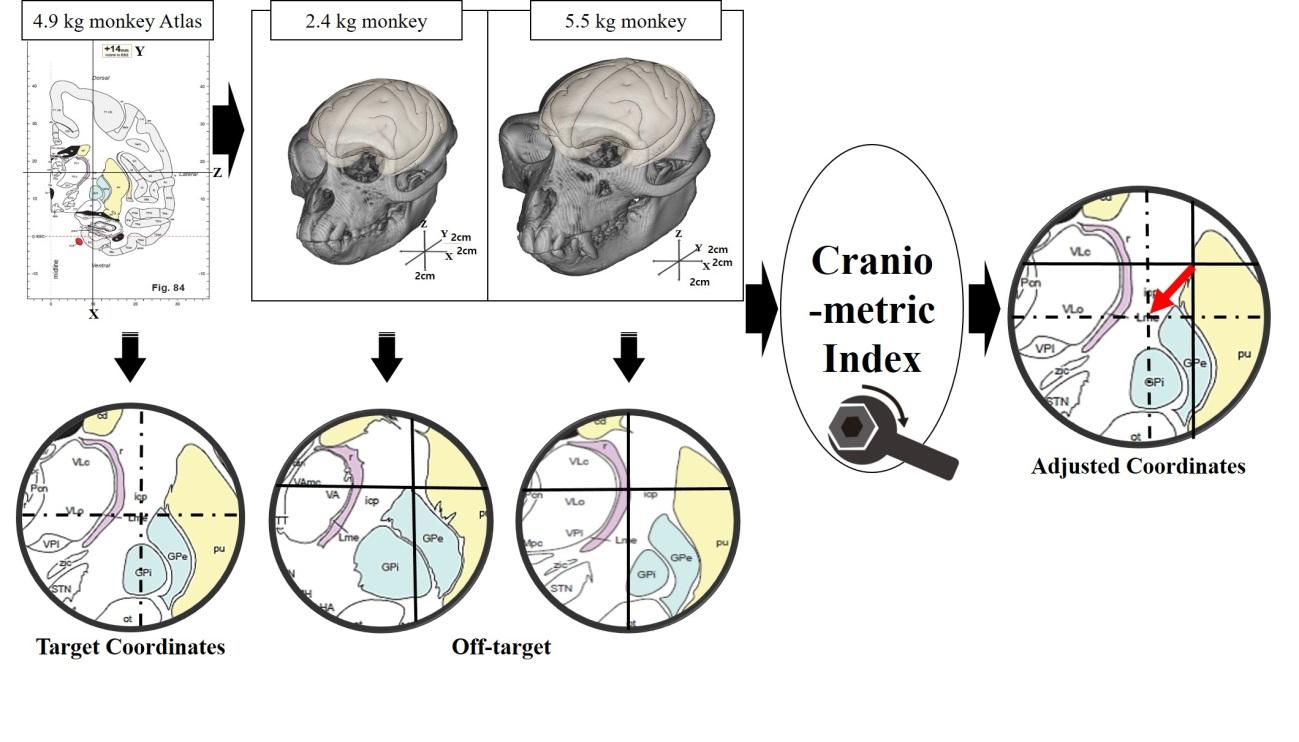Articles
Article Tools
Stats or Metrics
Article
Original Article
Exp Neurobiol 2019; 28(3): 425-435
Published online June 26, 2019
https://doi.org/10.5607/en.2019.28.3.425
© The Korean Society for Brain and Neural Sciences
Three-axis Modification of Coordinates Enables Accurate Stereotactic Targeting in Non-human Primate Brains of Different Sizes
Hyung-Sun Kim1, Goo-Hwa Kang1, Hanlim Song2, Ra Gyung Kim2, Ji-Young Park2, Jeong Ho Hwang1, and Hyoung-Ihl Kim2,3*
1Animal model research group, Korea Institute of Toxicology, Jeongup 53212, Korea.
2Neuromodulation Lab, Department of Biomedical Science and Engineering, Gwangju Institute of Science and technology, Gwangju 61005, Korea.
3Department of Neurosurgery, Presbyterian Medical Center, Jeonju 54987, Korea.
Correspondence to: *To whom correspondence should be addressed.
TEL: 82-62-715-3234, FAX: 82-62-715-5309
e-mail: hyoungihl@gist.ac.kr
Abstract
The brain grows with age in non-human primates (NHPs). Therefore, atlas-based stereotactic coordinates cannot be used directly to target subcortical structures if the size of the animal's brain differs from that used in the stereotactic atlas. Furthermore, growth is non-uniform across different cortical regions, making it difficult to simply apply a single brain-expansion ratio. We determined the skull reference lines that best reflect changes in brain size along the
Graphical Abstract

Keywords: Stereotaxy, Nonhuman primate, Skull, Body weight


